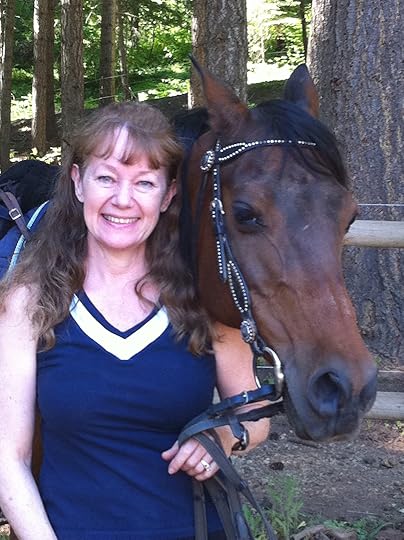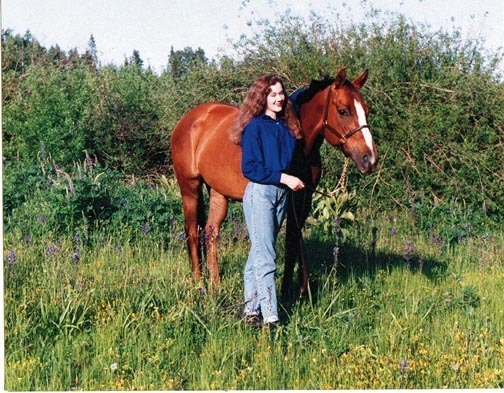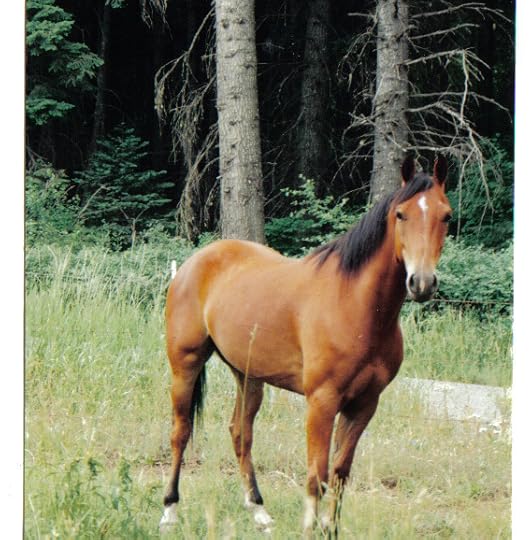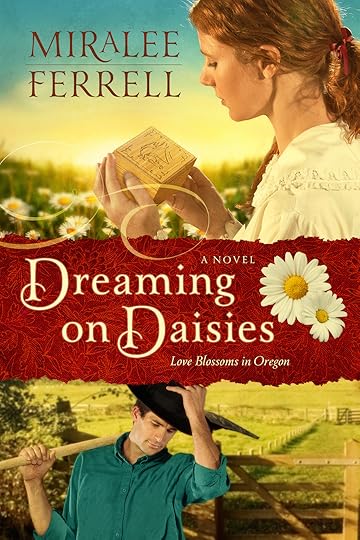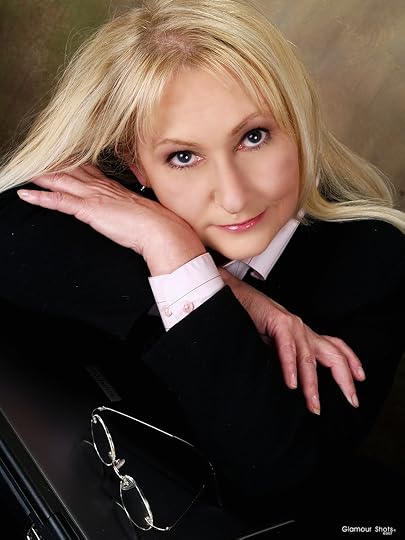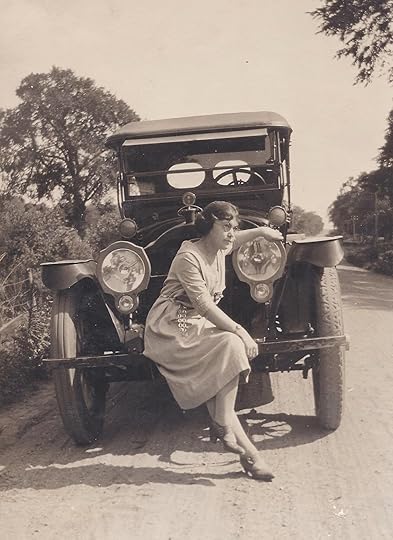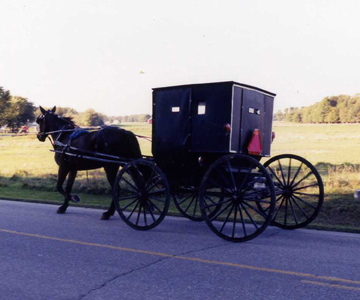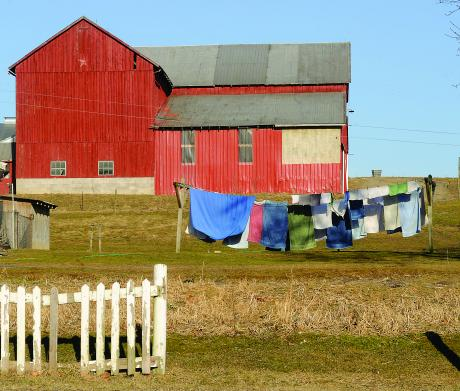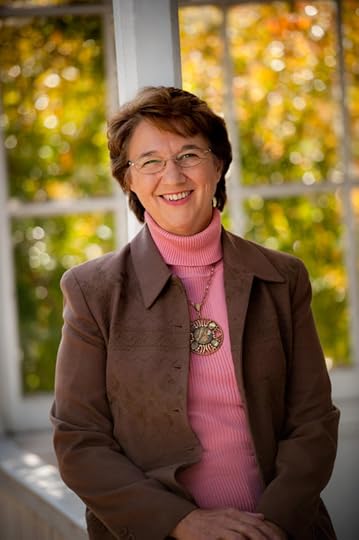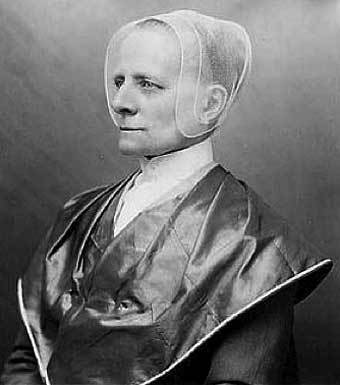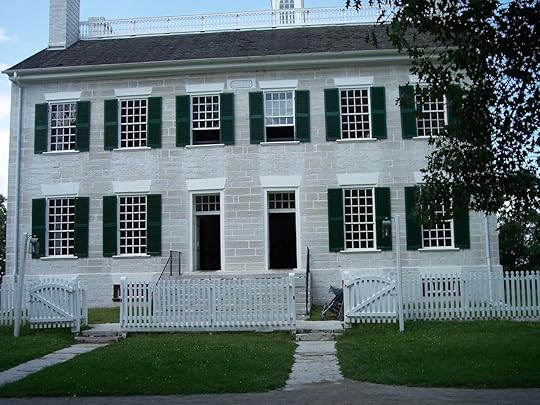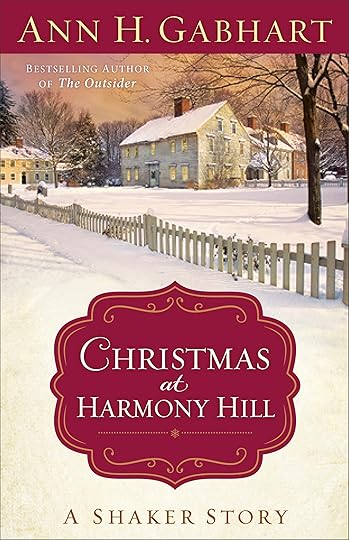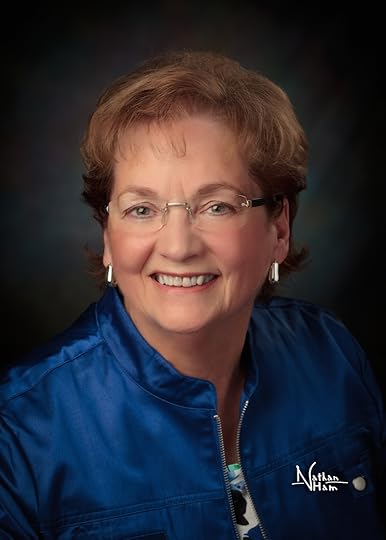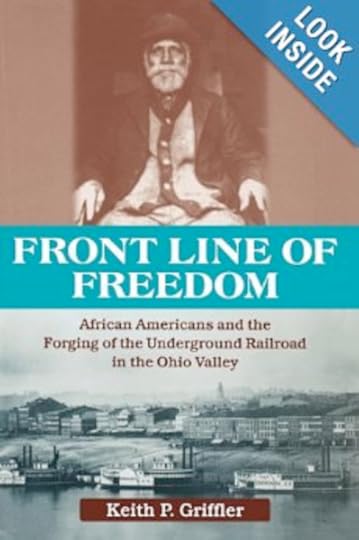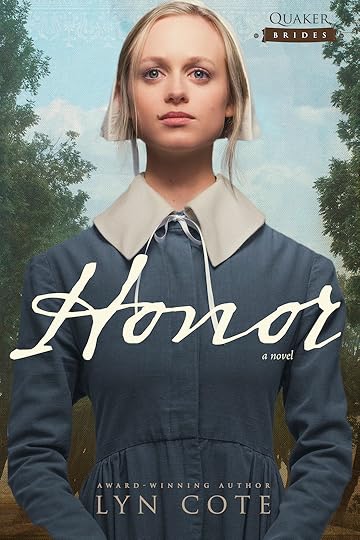Lyn Cote's Blog, page 54
October 11, 2014
Author Miralee Ferrell & Her Daughter’s True Story
My guest today is author Miralee Ferrell and she has her daughter’s true story to share. Here’s Miralee:
“Marnee Ferrell, my nineteen-year-old daughter, had been hired to do a man’s job on a 75,000 acre cattle ranch in dry, rocky, central Oregon. She sat on Ricky, her Morgan gelding, and surveyed the herd of about twenty-five head she must move from the pasture to the ranch house, eight miles away. Very little fazed this horse; not deer, snakes on the road, steep hillsides or cars zipping by. He’d never been around cattle before this job, but Marnee hadn’t hesitated to try him on a new adventure.
Marnee
She urged the mixed group of cows and calves toward the wide gate. They were moving nicely when a spotted cow with twisted horns defected from the herd and bolted the opposite direction. Ricky didn’t hesitate. He leaped after the cow as though it were a game.
Marnee pushed Ricky to turn back the cow—the rest of the animals were infected by the same desire to escape. Cows have very little sense, and they plowed through and over the tight, razor-sharp fence. By the time the last one reached the remains of the fence, it had been torn down, with the cattle running up the shale-covered sides of the canyon.
Ricky
Ricky was incredibly quick and Marnee was depending on his agility as she bent low over his neck. She needed to get far enough ahead to turn the leaders—the rest would fall in behind. She ran Ricky up and down the steep canyon walls, jumping brush and sliding on the treacherous loose shale. While coming down one hillside she prayed Ricky wouldn’t misstep. The ground was so steep her stirrups dragged in the dirt, and she held them up to clear the rocks. She hit the bottom of the gully and gained the lead, heading off the offending cow, and the rest followed.
The next mile or two the cattle calmed as they returned through the broken fence and up the road towards home. They followed an old road, fenced on both sides, but someone hadn’t closed a gate. The cow with twisted horns ran at high speed through the opening with the rest on her heels.
Again Marnee and Ricky charged after the herd. They spent another frustrating hour pounding over treacherous ground, avoiding holes and jumping brush, as they brought the cattle back onto the trail. Pushing cattle with no one riding point is tricky, but the ranch was short-handed with only one other experienced rider in another location, so Marnee had no choice.
With growing frustration she pushed her sweat-soaked horse. The cow that caused the trouble was decidedly unhappy. Three times she’d been deterred from returning to her pasture. As Ricky and Marnee took a breather, the fast moving, bawling cow spun, ran, and rammed into Ricky’s chest, knocking him backward. Shaken from the attack, Marnee kept her seat, then dismounted to ascertain Ricky hadn’t been gored. Thankfully, the cow’s horns were turned inward and didn’t do any damage. Ricky calmly moved forward and bent to his task as Marnee again collected the herd.
Both horse and rider were covered in dust, sweat and scratches from the rugged terrain they’d covered that five-hour day, but satisfaction poured through Marnee as she and Ricky arrived at their destination.
Marnee is like Leah Carlson, my heroine in Dreaming on Daisies—a young woman who is running a ranch almost single-handedly—with a tenacious strength and determination to win out over very high odds. She’s forced to succeed or lose the ranch, due to her father’s heavy drinking—but she’s constantly slammed with numerous trials that send her emotions reeling. But like Marnee, Leah never gives up—she’s a strong woman who knows what she wants and isn’t afraid to work for it. “–Miralee
To purchase, click here. Dreaming on Daisies: A Novel (Love Blossoms in Oregon Series Book 3)
Dreaming on Daisies—Just Released—Part of the Love Blossoms in Oregon Series
When her father’s debts, brought on my heavy drinking, threaten Leah Carlson’s family ranch, she fights to save it. When handsome banker Steven Harding must decline her loan request, he determines to do what he can to help. Just as he arrives to serve as a much-needed ranch hand, Leah’s family secrets—and the pain of her past—come to a head. They could destroy everything she’s fought for. And they could keep her from ever opening her heart again.
This is historical romance that offers hope and healing to the deepest wounds in a woman’s past.
Bio
Miralee Ferrell is a multi-published, award-winning author of 11 books. She lives in the Pacific NW with her husband of 42 years, where they enjoy working in their yard and garden, riding horses and playing with their dogs. Two of Miralee’s books in the Love Blossoms in Oregon series are currently on sale—with Wishing on Buttercups offered FREE on all ebook formats until Oct. 14.
So what did you think of that true story??? Miralee must be very proud of her daughter.
QUESTION: Has your daughter or mother ever done something you were proud of?–Lyn
 Send to Kindle
Send to Kindle 
The post Author Miralee Ferrell & Her Daughter’s True Story appeared first on booksbylyncote.com.
October 7, 2014
Lyn Reviews Marta Perry’s The Forgiven, Keepers of the Promise: Book One
October 5, 2014
Lyn Reviews Author Sharon Dunn’s Guard Duty
September 30, 2014
Author Denise Devine & “Both My Grandmas”
Last year I joine a Group of Authors. We call ourselves the SWEET ROMANCE READS group (NOTE: the graphic on the left.) Author Denise Devine is a member and she’s here to share about her latest release and both her grandmas. Here’s Denise:
“I grew up learning about life from both of my grandmothers.
They were strong women who not only survived the depression and the dust bowl years, but they flourished when most people were struggling. No matter how difficult things became, they never quit working toward a better life and never lost their zeal.
My grandma Esther
quit school at fifteen, got a job in a bedding factory sewing mattresses in Minneapolis and worked her way up to a foreman position. She made $16 a week and that was big money at the time! I used to listen to her stories about living through the depression, World War II and the Armistice Day Blizzard (11/11/1940). During my childhood, she taught me to sew clothes on her Singer treadle machine. I watched her can vegetables and make jam. Her favorite pastime was going to the movies and collecting recipes from newspapers and magazines. I still have those recipes. My sister has the sewing machine.
My Grandma Gladys
became a widow in her late forties and supported her two youngest daughters by working in a bakery. Despite being a single mother, she still managed to save money. She had a commercial safe in her closet where she stored silver dollars. (It was a heavy metal box on wheels.) She had enough coins for a down payment to build an office building on her land in the 1960s and start her own fashion shop on the main floor. She stayed open for business until she was 93.
The strength and resilience of these women made a deep impression upon me. They were self-educated and tough. Grandma Esther instilled me with self-sufficiency and compassion while Grandma Gladys taught me to be shrewd with money.
So, it’s no surprise that the heroines in my books exhibit the traits of Esther and Gladys.
I couldn’t portray them any other way. In my current release, “Merry Christmas, Darling,” the heroine is a nurse practitioner. Some of the residents in her condominium building are elderly and need minor assistance to stay independent. Kim likes helping them. It comes easy for her. But when the handsome bachelor in the penthouse unit, Rock Henderson, bargains with her to take care of him for a week, she lets him know that there will be no hanky-panky! She’s simply his neighbor in 601E, nothing more, nothing less. She doesn’t count on finding love under the mistletoe.
To purchase, click here.Sweet Christmas Kisses: Fourteen Sweet Christmas Romances
Merry Christmas, Darling is a light romantic comedy in the newly released boxed set “Sweet Christmas Kisses,” a bundle of PG-rated romance novels and novellas from USA Today, national bestselling, and award-winning authors. For a limited time, it’s available for 99 cents on Amazon, B&N, iBooks, Kobo and GooglePlay.
BIO:
Denise Devine has had a passion for books since the second grade when she discovered Little House on the Prairie by Laura Ingalls Wilder. She wrote her first book, a mystery, at age thirteen and has been writing ever since.??She lives on six wooded acres in East Bethel, Minnesota with her husband, Steve and her three problem (feline) children, Mocha, Lambchop and Tigger. She’s presently a cat person, but she loves all animals and they often find their way into her books. Besides reading and writing, Denise also loves to study and travel. You can visit her at www.deniseannettedevine.com , http://deniseannette.blogspot.com, www.facebook.com/deniseannettedevine, Twitter: @denisedevine1
 Send to Kindle
Send to Kindle 
The post Author Denise Devine & “Both My Grandmas” appeared first on booksbylyncote.com.
September 28, 2014
Plain People Discussion Finale-Author Marta Perry & The Amish
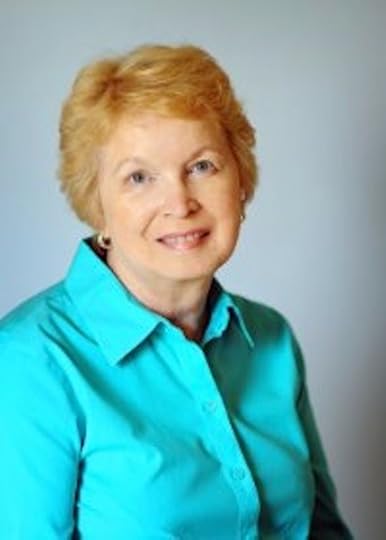
This week we come to the end of our PLAIN PEOPLE disucssion with Amish author Marta Perry. She is offering a copy of hew new book THE FORGIVEN to a commenter. Here’s Marta:
When and where did the Amish originate?
The Amish trace their roots back to the Protestant Reformation in the sixteenth century in Europe. Reformers began to question the Catholic Church, and such leaders as Martin Luther, Ulrich Zwingli, and John Calvin eventually split with the church, beginning the Lutheran and Reformed traditions. On a trip to Europe a few years ago, I stood in a park in Geneva, Switzerland, looking at statues of those men and wondering at their courage in taking on the strongest force in their world.
But of course the questioning didn’t stop with those first leaders. Others challenged them, believing that true followers of Christ should live apart from the world’s standards. They rejected the idea of infant baptism, believing instead in baptism as a sign of adult commitment. Thus they came to be known as Anabaptists, or “re-baptizers.” As a result, they were soon condemned by both the Catholics and the mainstream Protestants!
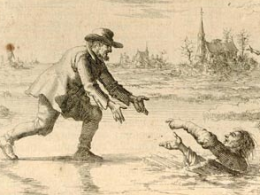
In the ensuing years, persecution erupted, with hundreds martyred for their faith, a fact which is still prominent today in the firm commitment to non-violence of the Anabaptist churches.
The Anabaptists were eventually called “Mennonites” due to the teaching of Menno Simons. One of his followers, Jakob Ammann, became troubled by the lives of some Anabaptists, feeling they lived too comfortably with the surrounding society. Ammann’s stricter teachings eventually led to the formation of a new group, the Amish.
Because of continuing persecution, the Amish began immigrating to America in the early 1700s, along with a number of other German-speakers, including my own Swiss and German ancestors, the Ungers and the Taubenbergers. Arriving at the port of Philadelphia, they settled in nearby counties, eventually spreading west and forming new communities. By the 1930s, there were no Amish left in Europe.
What sets your group apart from other Christians?
The basic issue of adult baptism, common to all Anabaptists, is an obvious hallmark. An Amish young person is baptized when mature enough to make the choice to join the church, knowing that he or she is committing to living Amish for the rest of life.
Other aspects of being Amish that set them apart include yieldedness, nonviolence, humility, and obedience. The Amish way is that of being yielded to God’s will, no matter what happens. It is espousing the belief in turning the other cheek, as exemplified in the stories of the martyrs. Humility is not a popular virtue in a contemporary culture which puts emphasis on competition, individualism, and personal fulfillment. The Amish believe that humility, as shown in speech, dress, attitude, and a hundred other details of daily life, is the Christian way. Obedience runs through all of Amish life: obedience of children to parents, younger to older, members to the church. From these basic beliefs flow all the things we identify as Amish: plain dress, horse and buggy transport, close family life, and interdependence on the group.
Is your group still alive today?
The Amish don’t merely survive, they thrive! When you consider that a very small number of people become converts, their growth seems even more astonishing. But not only do the Amish have large families, their retention rate of young adults is over 80%. Amish groups have spread to a number of states and Canada. In 2012, there were over 2,000 church districts, with a total population of over 270,000 people.
Why did you choose to write about this group?
I grew up in a small, rural community in southwestern Pennsylvania where there was a number of Plain people, many of whom went to school with me. Since then, I’ve lived in another rural community in central Pennsylvania, so the Amish and other Plain groups have always been part of my environment. I’m also of Pennsylvania Dutch descent, so the customs, traditions, and food we share creates a bond for me.
I first introduced Amish characters into a book I was writing in an existing series for Love Inspired. My editor said, “Do more of that!” So I did, and it’s led me to a very satisfying experience in writing about a group I know and admire.”–Marta
Marta’s social media links:
booksbylyncote.com.
September 21, 2014
Plain People Discussion Continues–Author Ann H Gabhart & The Shakers
Well, our discussion of the different sects of PLAIN PEOPLE continues with Author Ann H Gabhart, also known as the Kentucky Storyteller. Ann will be giving away a copy of CHRISTMAS AT HARMONY HILL to a commenter so be sure to leave one Ann has been my guest before and I’m happy to host her again. Here’s Ann:
1-When and where did your sect of Plain People begin? Please elaborate as you wish.
Ann Lee was the principal leader of the religious group that came to be known as the Shakers. She led a small band of eight followers to America in 1774. Here she gained more followers who believed she was the “second embodiment of the Christ Spirit.” She and her followers established the United Society of Believers in Christ’s Second Appearing, but due to their style of worship in which they often shook when overcome by the spirit, people derisively called them Shakers. In time, the Believers embraced the name and called themselves Shakers. To escape the evil influences of the “world,” they established villages where they shut away worldly influences and all worked for the common good without individual gain. Any possessions or property they owned when they joined the Shakers were surrendered to the Society. Members of the sect gave up whatever the leadership deemed worldly and attempted to live perfect lives in villages they endeavored to make into little heavens on earth.
At the turn of the nineteenth century, religious fervor swept the Western frontier, and thousands of people came to camp meetings such as the 1801 Cane Ridge Revival in Kentucky to hear the gospel and embrace new ways to worship. The Shakers, whose communities were flourishing in New England, sent missionaries to the west to take advantage of this wave of revival. Two Shaker villages were established in Kentucky, Pleasant Hill and South Union, from the converts they were able to convince to follow the Shaker way.
2-What sets your group apart from other Christians?
Many things set Shakers apart from other Christian followers. They had very different beliefs than other church denominations. The Shakers believed in celibate living, community property and confession of sins. Mother Ann, as their founding leader was called, taught that individual family groups and marriage unions caused strife and led to sinful living. Shakers lived as brothers and sisters with the sexes strictly separated. Houses had two doors and two staircases so that even incidental contact could be avoided. Also, the Shakers believed in equality of the sexes and races at a time when that was very uncommon in general society. Shaker women had places of leadership along with the men and blacks were welcomed into Shaker villages on equal footing long before slavery was abolished and the 19th Amendment gave women the right to vote in 1920.
The Shakers believed in unity in all things and that work was a way of worshiping. They “labored” their songs and “exercised” their dances in their meetings. They were staid, hard workers but exuberant and often frenzied in their worship. The Shakers sometimes opened their worship services in hopes of gaining converts, but most who attended from the “world” did so merely to view a curiosity and as a kind of odd entertainment. The church people who lived near the villages considered the Shaker worship wrong and even blasphemous. However, they did admire the Shakers’ charitable spirit and their fine workmanship of their buildings and their products. Shaker was perhaps the first widely known trade name that people all across the country recognized and trusted. If it was Shaker made, it would be as advertised and a good product.
3-Is your sect still active today? If so, why do you think that this sect has survived? If not, why do you think your sect didn’t last?
One Shaker village remains in Sabbathday Lake, Maine with two or three Shakers. All the other Shaker villages were abandoned by the middle of the 20th Century. Many think the Shakers died out because of their belief in celibate living which certainly didn’t lead to children growing up in the religion. The Shakers did take in orphans in hopes of raising them in the Shaker way, but nearly all of these children left when they came of age. Difficult economic times brought many converts into the village prior to the Civil War. At the Shaker villages, members were expected to work, but they were also guaranteed food and shelter and the young people received schooling. After the war, the villages began to lose many of their young and middle-aged men to the opportunities opened up by an era of industrialization. They were able to find jobs to support themselves and their families without having to abide by the Shakers’ strict rules. Those in leadership positions in the villages aged and without young leaders to take over for them, they stayed in control too long, often with abilities diminished by age that sometimes caused them to make bad financial decisions. As time went by, there was a gradual decrease in worship emphasis and an increase in social activities and amusements.
The Shaker population reached its peak in the 1820s with estimates of 4,000 members at all the villages in the country from Maine to Indiana. The villages began to close one by one as membership declined. In Kentucky, the twelve Shakers living at Pleasant Hill sold off much of their property to settle debts in 1910 and then deeded the rest of their property, 1,800 acres, to a neighboring farmer in exchange for his agreement to care for the remaining Shakers until their death. Mary Settles was the last to die in 1923. South Union, the other Kentucky Shaker village, closed in 1922 when the property was sold at auction. The two men and seven women remaining were offered the choice of relocating to an eastern village or receiving $10,000.
Both Kentucky villages are now open to the public. South Union is a museum (www.shakermuseum.com) and the Shaker Village at Pleasant Hill was restored in the 1960’s as a living history museum where visitors can walk the same paths as the early Shakers and perhaps get a glimpse back in time at the Shaker life. www.shakervillageky.org
4-Why did you choose to write about this sect?
When I began writing novels many years ago–my first historical novel was published in 1978–I concentrated on Kentucky history since that’s where I live. I wrote about the pioneer days and the Civil War years. Then I wrote a book about the Shakers in Kentucky. Unfortunately, that story didn’t meet market needs at the time and stayed unpublished until years later I was blessed to have a book published in the Christian market, thus opening up new opportunities for my Shaker story. I worked it over and The Outsider was eventually published in 2008, almost thirty years after I’d first written that Shaker story. Then my publishers surprised me by asking me to write more Shaker books, not something I had planned to do. But I did go back into the Shaker world, did more research, found more fascinating Shaker history and came up with new Shaker characters. Each of the books I’ve written about the Shakers are stand alone stories set in my fictional Shaker village of Harmony Hill, but the physical setting is based on the Shaker village of Pleasant Hill near where I live here in Kentucky. So I suppose I wrote that initial Shaker story because I was captivated by the history of the Kentucky Shakers and then I wrote more Shaker stories because readers seemed as interested as I was in seeing my characters experience the Shaker way while dealing with the challenges and problems in their lives.
Here’s Ann’s most recent Shaker book.
To purchase, click here.Christmas at Harmony Hill: A Shaker Story
Christmas at Harmony Hill blurb
It is 1864 and the nation is still torn apart by civil war when Heather Worth discovers she is with child. She has been working as a laundress with her husband’s army unit, but when the army gets orders to march south to Tennessee, Gideon insists Heather go home to have their child under safer conditions. Heather agrees, but returns home to another kind of devastation–deaths in the family and a father who refuses to forgive her for marrying a Yankee. With nowhere else to turn, Heather seeks refuge at the Shaker village of Harmony Hill, where her great aunt Sophrena lives. There, after many peaceful years at Harmony Hill, Sophrena is having doubts about her Shaker path. Both women are in need of love and forgiveness–whether given or received. With Christmas coming, can the miracle of new life fill their hearts with unexpected joy?
To find out more about Ann or her books visit booksbylyncote.com.
September 14, 2014
“Plain People” Discussion Continues–Author Judith Miller & the Amana
The second week of our PLAIN PEOPLE discussion features author Judith Miller who writes about the Amana. Many of you might never have heard of this sect. But since I lived in Iowa for almost twenty years, I am well acquainted with them. I recently ate at the Ronnenberg Restaurant in the Amana Colonies. And everyone has heard of Amana appliances, right? Judith is offering a copy of her latest book in the HOME TO AMANA series, A Shining Light. BE SURE TO LEAVE A COMMENT TO ENTER THIS BOOK DRAWING.
So let’s see what Judith has to tell us about this interesting and unique group of Plain People, THE AMANA!
1-When and where did your sect of Plain People begin?
The Inspirationists eventually settled in Amana, Iowa originated in Germany, during the early 1700’s where a religious awakening had begun. They soon were persecuted due to their refusal to send their children to public schools, because they believed in freedom of speech and worship, because they were pacifists.
They took refuge in Hessen, Germany where they were given protection, but due to excessive rents and taxes, continued persecution and a killing drought, their leaders decided the Lord was leading them to a new place. They scouted land in America and first settled near Buffalo, New York, in 1842. They called their settlement, Ebenezer, and they adopted a constitution and established a communal system.
In 1855, when more farmland was needed for the expanding community that now numbered around 1,200 members, leaders looked to the west for farmland and finally agreed upon land in Iowa where the first village, Amana, was constructed. Five more villages, Middle Amana, High Amana, West Amana, South Amana and East Amana, were built. In 1861, Homestead was purchased. These seven villages and the 26,000 acres of land they came to own, are known as the Amana Colonies.
2-What sets your group apart from other Christians?
Eberhard L. Gruber, a Lutheran clergyman, and Johann F. Rock, a harness maker, became acquainted. They believed a prayerful relationship with the Lord would lead to a Godly life. They advocated humility through simple worship and believed that God may communicate to his followers through an inspired individual as He did in the days of the Biblical prophets. This individual, called a Werkzeug (instrument) is regarded as a tool of God’s will through which God speaks to his people. This was (and is) a foundation of the Amana Church. The last Werkzeuk was Barbara Heinemann Landmann who died in 1883. There has been no other Werkzeug since that time, although this belief remains a foundation of the Amana Church.
Their communal lifestyle also set them apart from other religious sects. The community which now owned about 26,000 acres continued their communal lifestyle until 1932 when the members voted to abandon the communal way of life, but maintain their community. The old system was set aside and a new profit-sharing, joint stock corporation, the Amana Society was formed.
3-Is your sect still active today? If so, why do you think that this sect has survived? If not, why do you think your sect didn’t last?
Yes, they are still active. Although they believed that remaining single was preferable (so that there would be no distraction from individual relationship with the Lord), marriage was permitted. Unlike the Shakers who lived communally, but prohibited marriage and were housed in dormitory style housing, the residents of Amana lived in houses with their families. Many of the houses were quite large so there would be apartments for single or small families. Each set of living quarters had a parlor and bedrooms although there were no kitchens since all of the cooking and meals were shared in communal kitchen houses. There were more than 50 kitchen houses in the seven villages feeding the 1,500 residents three meals a day plus two coffee breaks.
Visitors may attend church services in South Amana, the early service is still conducted in German while the later service is in English.
4-Why did you choose to write about this sect?
I am drawn to unique settings, so after a visit to the Amana Colonies many years ago, I knew I wanted to write about these people and their history in this country. They have maintained fabulous historical documentation which, for any writer of historical books is a wonderful gift. After spending time in their museum, touring the villages, and perusing some of their archives, I was captivated and knew I wanted to share stories set in the Colonies. The Inspirationists have a rich history in this country. Although there are a number of non-fiction books and a multitude of articles and theses setting forth the history of the group, there are not many works of fiction set in the Colonies. After writing six books set in the Colonies, I have developed many friendships among the residents and have enjoyed the relationships I’ve developed over the past years.
I look forward to hearing any questions or comments you might have regarding the Amana Colonies.
Blessings,
Judy
Online:
September 7, 2014
“Plain People”–Amish, Amana, Shakers and Quakers–A Discussion
As many of you are aware, I often (but not always) write about Quakers or the Society of Friends. At the release of HONOR, the first in my “Quaker Brides” series, I decided to hold a discussion about these Christian sects which are often called “Plain.”
According to Wikipeida, “Plain people are Christian groups characterized by booksbylyncote.com.
September 2, 2014
Lyn Reviews Frontline of Freedom, Non-Fiction
Frontline of Freedom by Keith P Griffler
My rating: 5 of 5 stars
I read Frontline of Freedom in researching the first book in my new series “Quaker Brides.” Book one takes place in and near 1820 Cincinnati, Ohio, where my heroine Honor Cathwell joins the Female Antislavery Society.
Frontline of Freedom is an excellent resource for anyone interested in the history of the struggle for abolition, the beginnings of the Underground Railroad (which began in Ohio) and the African-American and the white men and women who defied unjust laws to end slavery.
As I read this, I was reminded of the many times, I’ve “lifted” actual people and events from history because truth is often more exciting than anything I could think up!
NOTE: In the left column, my Pinterest board for abolition.
QUESTION: Why do you enjoy reading historical novels? What’s your favorite ever?–Lyn

 Send to Kindle
Send to KindleThe post Lyn Reviews Frontline of Freedom, Non-Fiction appeared first on booksbylyncote.com.
September 1, 2014
Honor, Book One of my “Quaker Brides” series-Excerpt
I’m pleased to share Honor, Book One of my new “Quaker Brides” series. Here is Scene One. Remember to leave a comment. I’m giving away 2 copies this week!
Chapter One, Scene One
High Oaks Plantation
Tidewater Maryland
August 1819
Each time her grandfather struggled for another breath, Honor Penworthy’s own lungs constricted. She stood beside the second story window, trying to breathe normally, trying catch a breeze in the heat. Behind her, the gaunt man lay on his canopied bed, his heart failing him. How long must he suffer before God would let him go on?
Outside the window stretched their acres, and the tobacco fields where dark heads covered with kerchiefs or straw hats bent harvesting the green-speared leaves. High Oaks–to her the most beautiful plantation in Maryland. She felt a twinge of pain, of impending loss.
“The edict was impractical. And your…father was a dreamer. But at least, he had the sense to realize his irrational decision must be kept secret. Doesn’t that tell you not to carry it out?” Each word in this last phrase slapped her and each cost him.
Unable to ignore this challenge, she turned. In her grandfather’s youth, the Society of Friends had dicatated that all Friends should free their slaves. “My father remained Quaker,” she said the bare words in a neutral voice, trying not to stir the still smoldering coals.
“I remained a Christian,” he fired back. “My forebears chose the leave the Anglican church to become Quaker. I chose to change back.”
He’d made that choice because the Episcopal church didn’t press its members to emancipate their slaves. All of the other Quakers in their county had left except for a few older infirm widows, women who’d had the control of their land left to sons. As a single woman, however, Honor could inherit and dispose of property legally.
Honor returned to his bedside. At the sight of her grandfather’s ravaged face, her pity and love surged.
At her approach, her grandfather’s mouth pulled down and his nose wrinkled up–as if he were tasting bitter fruit.
Torn between her love for her father and her grandfather, she didn’t want to fight with him, not now. “My father loved thee,” she said to placate him.
“That is beside the…point. He should never has asked that promise of you. It was cowardly.” He panted from the exertion.
She gazed at him levelly. The memory of her father’s untimely death still had the power to sweep away her calm but one couldn’t change history. Her grandfather’s comment could lead them into harsh recriminations. And proved that he knew he’d done wrong and he’d chosen the wide way, not the narrow gate. She chose her words deftly. “I believe that my father was right.”
Her grandfather’s mouth tightened, twisted not only because of her recalcitrance but also from a sudden pain. He gasped wildly for breath.
If only it weren’t so hot. She slipped another white-cased down pillow under his chest and head, trying to ease his breathing. She blinked away tears, a woman’s weapon she disdained. “How will you…work the land without…our people?” he demanded in between gasps.
“Thee knows I cannot. And that once they are gone, there will be no way I can hold the land.” She said the words calmly but inside fear frothed up. Freeing their slaves would irrevocably alter her life.
He slapped the coverlet with his gnarled fist. “This land has been Penworthy land for four generations. Will you toss aside the land your great-great grandfather cleared by hand and fought the Cherokee for?”
She felt the pull of her heritage, a cinching around her heart. “I know. It weighs on me,” she admitted.
“Then why do it?”
He forced her to repeat her reasons. “I gave my father my promise and I agree with him.”
Her grandfather made a sound of disgust, a grating of rusted hinges. Then he glared up at her from under bushy, willful brows. “Things have changed since your father left us. Did you even notice that our bank failed this year?”
The lump over Honor’s heart increased in weight, making it hard to breathe around it. “I am neither blind nor deaf. I am aware of the nationwide bank panic.”
“Are you aware that we’ve lost our cash assets? We only have the land and the people to work the land. And debts.”
“Debts?” That she hadn’t known.
“Yes, debt is a part of owning a plantation. And I’m afraid last year’s poor crop put us in a bad situation even before the bank panic.”
Honor looked into her grandfather’s cloudy, almost blind eyes. “How bad?”
“If you free our people and sell the land, you will have nothing worthwhile left.”
A blow. She bent her head against one of the posts of the canopied bed. The lump in her chest grew heavier. “I didn’t think emancipation would come without cost.”
“I don’t think you have any idea of how much it will cost you.” Disdain vibrated in each word. “If you free our people and sell the plantation, who will you be if you aren’t the lady of High Oaks?”
She looked up at the gauzy canopy. “I’ll be Honor Penworthy, child of God.”
“You will be landless, husbandless and alone,” he railed. A pause while he gathered strength, wheezing and coughing.
Honor helped him sip honey water.
“I don’t want you in that vulnerable position,” he said in a much gentler tone, his love for her coming through. “I won’t be there to protect you. You think that Martin boy will marry you, but he won’t. Not if you give up High Oaks.”
Alec Martin had courted her but no, she no longer thought they would marry. A sliver of different pain pierced her.
The floor outside the door creaked, distracting them. Honor turned to hear footsteps she recognized. “Darah?” she called.
“I want to see her,” Grandfather said, looking away.
Honor moved quickly and opened the door.
Darah paused at the head of the stairs. She was almost six years younger than Honor’s twenty-four years, very slight, pretty with soft brown hair and soft brown eyes.
“Cousin, come here. Our grandfather wishes thee.”
Darah reluctantly glanced into Honor’s eyes–at first like a frightened doe and then with something else Honor had never seen in her cousin before. Defiance?
Darah walked back and slipped past her into the room. “Grandfather?”
He studied his hands, now clutching the light blanket. “Honor, leave us. I wish to speak to Darah alone.”
Why? Worry stirred. She ignored it. “And I must see to a few of our people who are ailing.” Honor bowed her head and stepped outside, shutting the door. She went down the stairs to gather her medicine chest and later she must meet with the overseer. The plantation work could not be put aside because her grandfather’s heart was failing. She tried to take a deep breath but the weight over her heart would not budge.
She hated to see her grandfather suffer and she hated to disappoint him. But her course had been set since she was a child. She shuttered her mind against the opposition she would stir up.
********
QUESTION: So did Honor’s situation catch your interest? Have you ever had to disappoint someone you loved?–Lyn

 Send to Kindle
Send to KindleThe post Honor, Book One of my “Quaker Brides” series-Excerpt appeared first on booksbylyncote.com.

